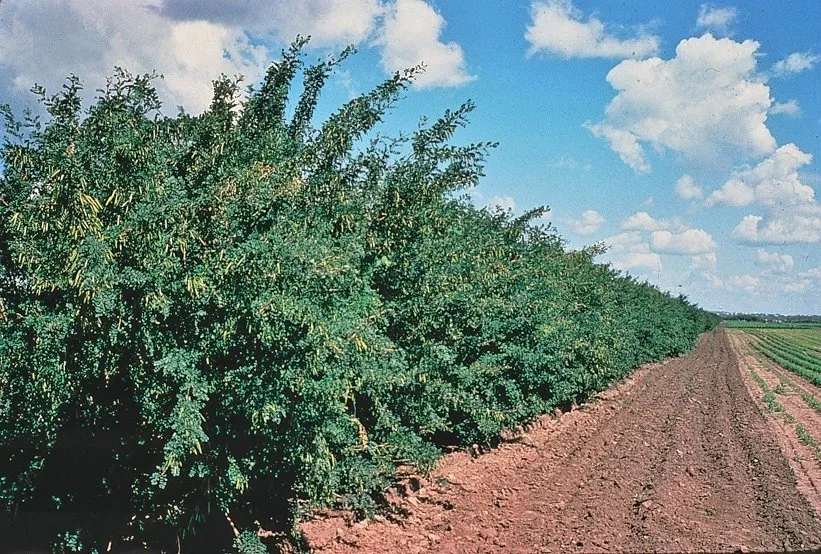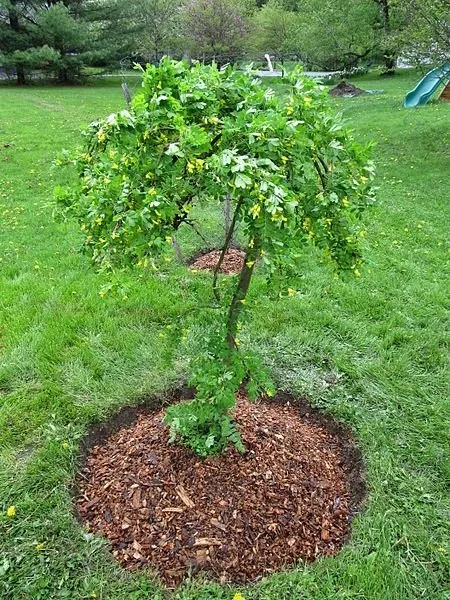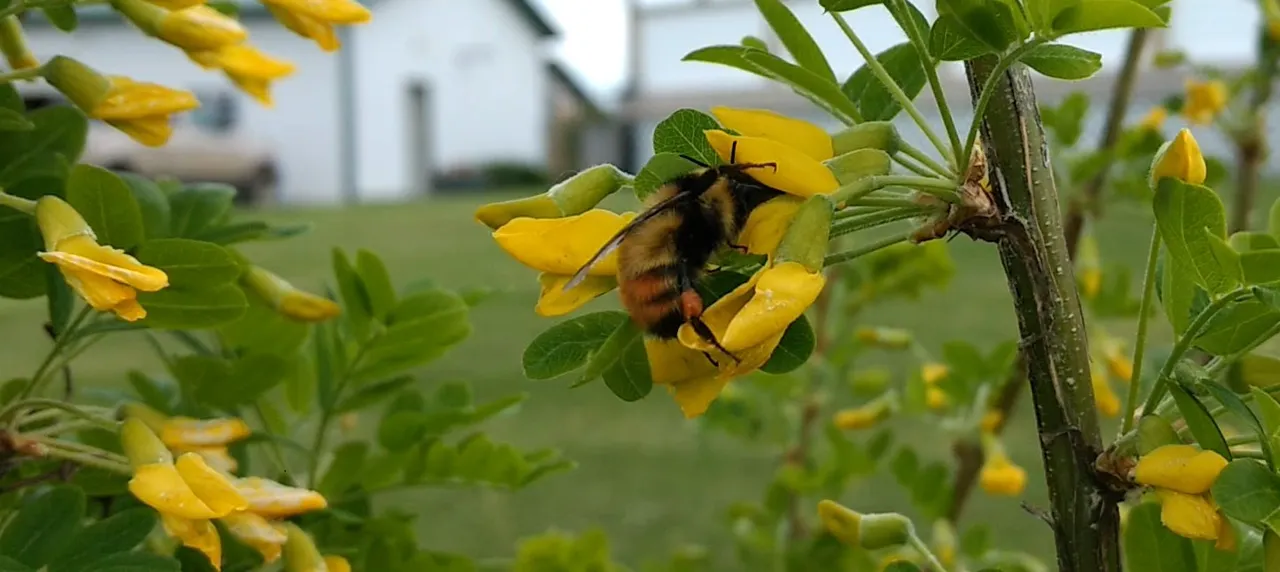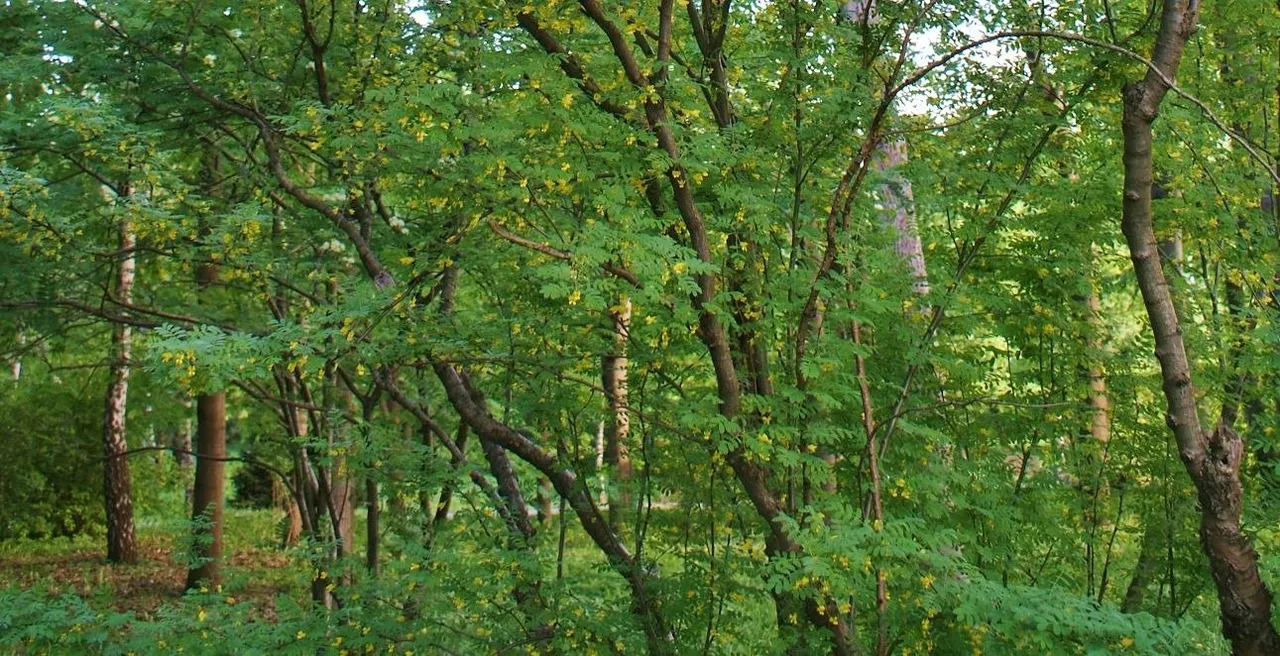 Source
SourceDescription
The common caragana (Caragana arborescens) also known as Siberian pea-tree and Siberian peashrub, is a medium to large shrub with compound leaves and bright yellow flowers. Its native range encompasses a large part of Northern and Eastern Asia. It was originally brought to North America by Asian immigrants who used it as a food source.

Caragana is extensively used on the prairies as a shelterbelt tree due to its moderate to fast growth rate and drought tolerance. Often used as a hedge shrub, the caragana has the ability to tolerate close planting and rapidly regrow after trimming. Much like the last permaculture plant I highlighted, the sea buckthorn, it is considered invasive in some areas and there are active programs to control or eliminate it.
It should be noted that the Caragana family of plants has undergone a lot of breeding and there are many plants in the caragana genus that share similar but slightly different attributes. If there is something you don't like about about the common caragana there may be a variety that fits your needs better. Some are different species like the pygmy pea shrub (Caragana pygmeae) while others like the weeping caragana "Pendula" is a named variety of common caragana that is usually used as a small decorative tree.
Uses
While caragana is not a particularly sexy plant, it is quite a work horse and has many useful attributes. Having a dense root system, and high pollution and drought tolerance means that it is a perfect plant for erosion control and reclamation. Being a nitrogen fixer also makes it a great support species because of its ability to enrich the soil. In windy dry areas, Caragana is often planted as a pioneer species and once established other more sensitive trees and shrubs can be nursed along.
It can also be used as a fuel wood plant due to it's ability to regrow rapidly after trimming. Coppicing and pollarding may be a preferable alternative to selective pruning or trimming for this purpose.

Due to its origins as a food plant the caragana can be used as an emergency food source. After flowering, caraganas produce a large number of small pea like pods that can be eaten whole when young and produce edible seeds. These can be harvested and used fresh or dried and then rehydrated like a bean. It is recommended that the seeds and pods be cooked. The main drawback, preventing caragana from being a primary food source, is the high level of effort and tediousness needed to harvest a significant amount of seeds.
As an animal fodder crop, caragana may have much greater potential. There are claims that Siberian peasants were able to keep their chickens alive though second world war winters feeding them caragana seeds, which are as high as 36% protein. The branches and leaves also make an excellent browse for animals like sheep and goats.

Other uses of caragana include habitat for song birds and predatory insects like lacewings. They are a great flower and nectar source for bees and butterflies. They have been used to produce cordage due to their stringy bark and it is reported that there is a way to use them to produce a blue dye. All in all, caraganas are a pretty bad ass plant!
Growing Conditions, Propagation, and Maintenance
Common caragana is hardy in USDA zones 2-7 and needs cold winters to thrive. It prefers full sun but will also grow in partial shade, although perhaps not at the same rate. Wetter soils are tolerated as long as they are well drained and not saturated. Caragana will not survive on sites that are consistently flooding. Once established caragana is very drought tolerant.
 Source
SourceCaragana does not sucker but has a habit or spreading aggressively due to seed drop. It is generally propagated by seeds but can also be layered or rooted from cuttings.
Very little maintenance or care is needed, although this long lived shrub may benefit from trimming or pruning which can encourage rapid new growth. Coppicing may also be used to reinvigorate a stagnant plant. Of course, you could always just let browsing livestock do the majority of this work for you!
Sources
http://www1.agric.gov.ab.ca/$department/deptdocs.nsf/all/agdex986
https://en.wikipedia.org/wiki/Caragana_arborescens
http://tcpermaculture.com/site/2013/05/13/permaculture-plants-pea-trees/
https://www.hort.purdue.edu/newcrop/duke_energy/Caragana_arborescens.html